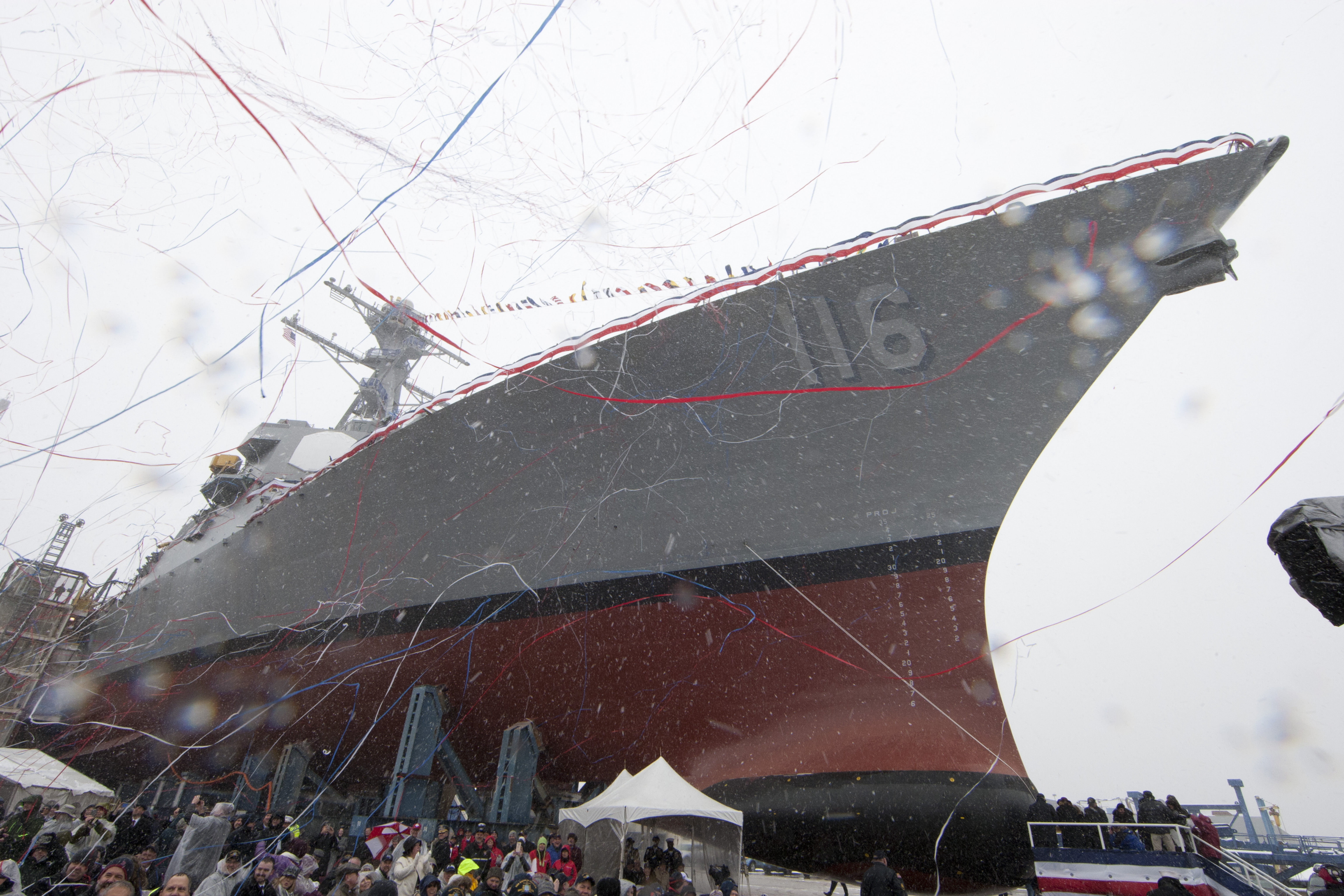
ARLINGTON, Va. – The Navy’s top weapons buyer wants to speed-up purchases, including finding ways to squeeze cost and time-saving efficiencies out of large programs.
While speaking with reporters at the Surface Navy Association symposium, James Geurts, assistant secretary of the Navy for research, development and acquisition, spelled out the cornerstones of his approach to purchasing. He boiled it down to three primary tenets: reliable, agile, affordable
“We need to look at things with a portfolio approach,” Geurts said.
“I want to build everything as fast as we can.”
With rapid prototyping, Geurts said Congress gave the Navy the authority to speed up the timelines for developing new systems. He wants to use this approach used for all systems, not just the small buys. Competition and price challenges also drive costs down.
“We’ve got to make that not just the thing we do in small orders but make that part of the way we do business [across the service],” Geurts said.

Geurts, who had been Special Operations Command’s top weapons buyer, said many of the same strategies he previously used, can be employed by the Navy. Even large purchases, he said, offer plenty of opportunities to speed up the overall pace of development and building process by hastening the pace of developing various components.
“I think there are opportunities too, within these longer more deliberate programs, to build agility cycles in there,” Geurts said.
“So, it may take us a while to build a ship, and we’re always going to look to drive that efficiency and timeline down, but if I think about the combat systems on a ship, how do I retain agility, both for the hulls we have in the water and the hulls that we’re building, that I can continue to operate at the pace of technology, at the pace of the threat, and at the pace of my warfighters demands.”
Using open architecture, which allows changes or updates to quickly spread through a program, is one way to improve the way programs are efficiently built and maintained. Bringing non-traditional thinkers, research and development labs, small businesses into the early phases of a new program’s design will also help speed up the process, he said.
Citing the Navy’s new frigate acquisition program as an example, Geurts said, “I’m not as focused on one single program as a culture of affordability.”
Acquisitions are just part of the calculus when considering overall Navy costs. About 70 percent of program costs deal with the long-term sustainment of equipment, Geurts said. Evaluating how the Navy accounts for maintaining equipment after delivery, he said, will also drive program affordability by ensuring contracts handle sustainment costs.
“There’s a lot of different ways to do things,” Geurts said. “The really good programs are the ones that can knit all that together, so while they’re delivering on a deliberate predictable credible schedule, they’re constantly delivering innovation within that more deliberate schedule.”





